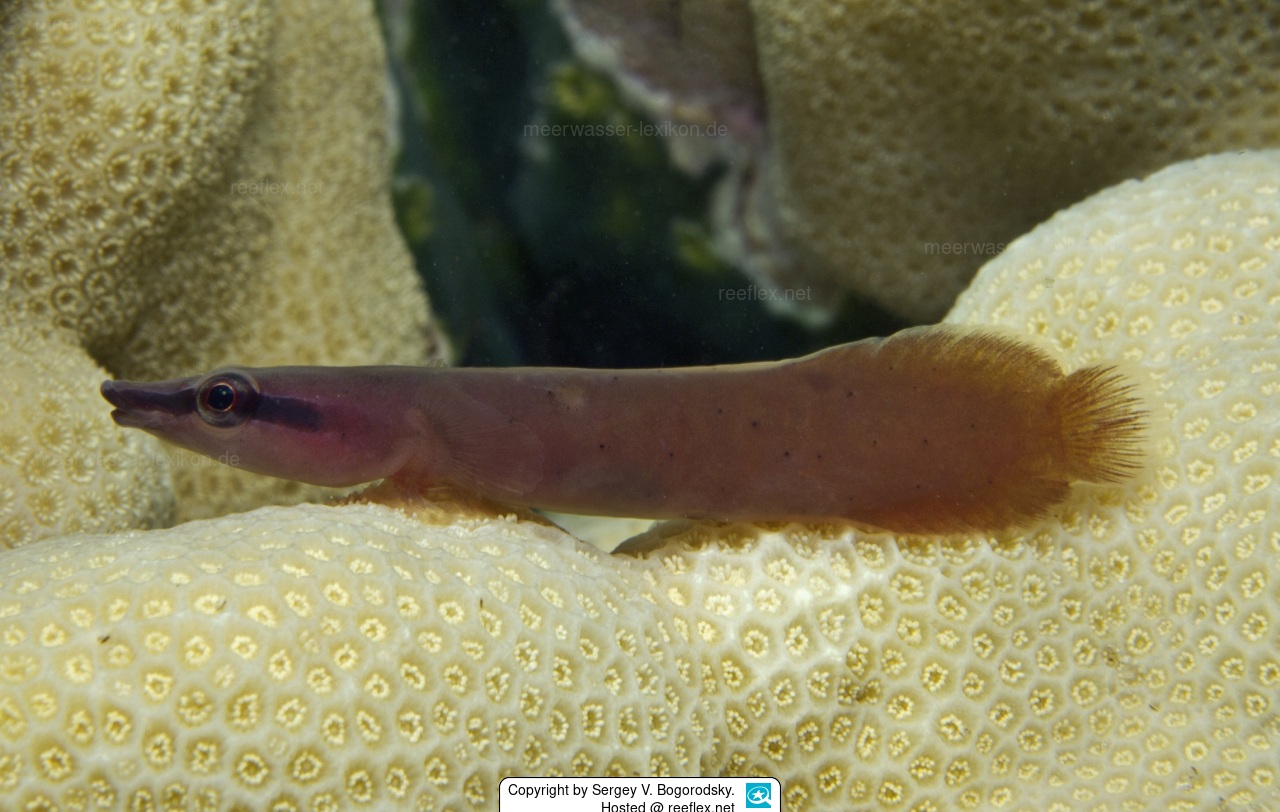Info
Basic information about shieldfish:
The shieldfish family (Gobiesocidae) is found in all tropical to warm-temperate seas, with a few species also occurring in freshwater.
The common name “suckerfish” refers to their sucker disc, which is formed from the pelvic and pectoral fins with a spine and four rays and which they use to suck themselves onto hard surfaces.
Lepadichthys erythraeus Briggs & Link 1963 was described based on a single specimen collected near Ghardaqa (now Hurghada), Egypt.
The initial description did not include any information on the shield belly's color or habitat.
In 2015, it was redescribed based on additional characteristics and color photos.
The specimens were collected at the base of a coral block on a flat reef with mixed sand and flat rocks with patches of dead coral, within a living coral head in a sheltered bay, from a fringing reef at a depth of 1-3 meters, and from an isolated coral block.
All Red Sea shieldfish were collected in close association with sea urchins of the genus Diadema, which the fish use for protection.
When alive, the coloration is generally reddish brown with small black spots scattered irregularly over the body and a distinct dark (black to brown) stripe running from the tip of the snout over the eye and ending about halfway between the rear edge of the eye socket and the gill opening.
Some individuals have a light stripe that starts at the tip of both jaws, runs across the head between the eyes, and ends just behind them.
The base of the pectoral fins is darker than the body color, but not as dark as the stripe that runs through the eye.
The pupil is dark with a distinct yellow ring at the outer edge.
The middle fins are dark with light edges.
Visually quite similar species: Lepadichthys coccinotaenia Regan 1921
Only one related species occurs in the Red Sea, Lepadichthys lineatus, which differs significantly from Lepadichthys erythraeus in its striped color pattern and close relationship to crinoids.
We would like to thank Dr. Sergey Bogorodsky for the first photo of a living Red Sea Papillate Clingfish.
The shieldfish family (Gobiesocidae) is found in all tropical to warm-temperate seas, with a few species also occurring in freshwater.
The common name “suckerfish” refers to their sucker disc, which is formed from the pelvic and pectoral fins with a spine and four rays and which they use to suck themselves onto hard surfaces.
Lepadichthys erythraeus Briggs & Link 1963 was described based on a single specimen collected near Ghardaqa (now Hurghada), Egypt.
The initial description did not include any information on the shield belly's color or habitat.
In 2015, it was redescribed based on additional characteristics and color photos.
The specimens were collected at the base of a coral block on a flat reef with mixed sand and flat rocks with patches of dead coral, within a living coral head in a sheltered bay, from a fringing reef at a depth of 1-3 meters, and from an isolated coral block.
All Red Sea shieldfish were collected in close association with sea urchins of the genus Diadema, which the fish use for protection.
When alive, the coloration is generally reddish brown with small black spots scattered irregularly over the body and a distinct dark (black to brown) stripe running from the tip of the snout over the eye and ending about halfway between the rear edge of the eye socket and the gill opening.
Some individuals have a light stripe that starts at the tip of both jaws, runs across the head between the eyes, and ends just behind them.
The base of the pectoral fins is darker than the body color, but not as dark as the stripe that runs through the eye.
The pupil is dark with a distinct yellow ring at the outer edge.
The middle fins are dark with light edges.
Visually quite similar species: Lepadichthys coccinotaenia Regan 1921
Only one related species occurs in the Red Sea, Lepadichthys lineatus, which differs significantly from Lepadichthys erythraeus in its striped color pattern and close relationship to crinoids.
We would like to thank Dr. Sergey Bogorodsky for the first photo of a living Red Sea Papillate Clingfish.







 Dr. Sergey V. Bogorodsky, Russland
Dr. Sergey V. Bogorodsky, Russland



